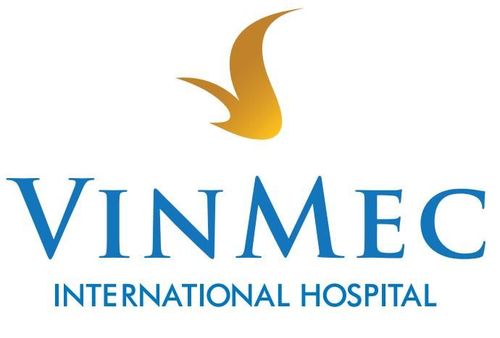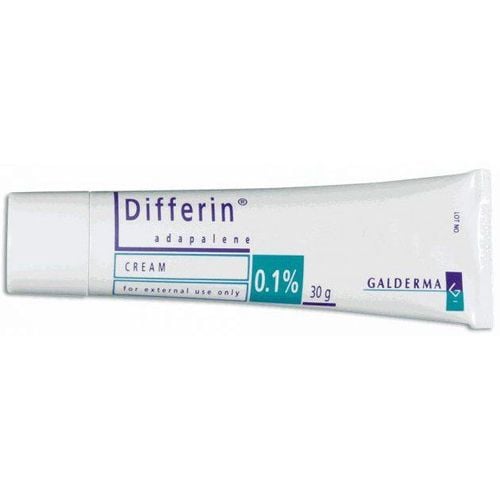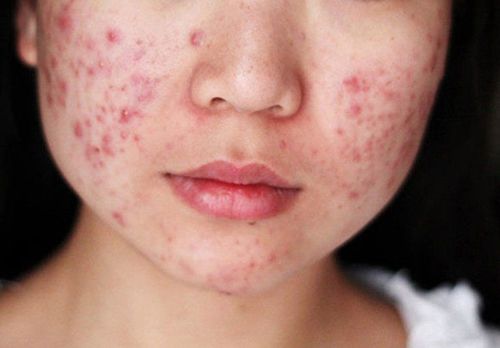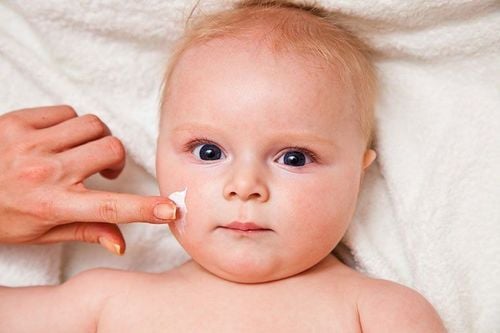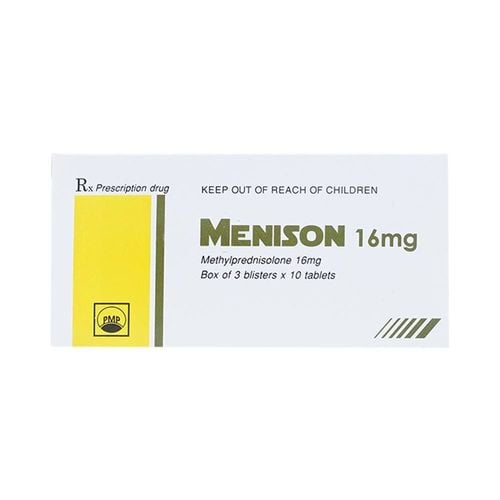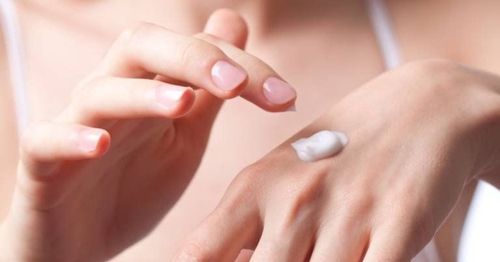This is an automatically translated article.
Facial skin with rosacea is a chronic disease with erythema in the center of the face with the age of 30-60 years old. This type of lesion can appear short-term or can be permanent and cause many cosmetic effects. The following article will provide you with some symptoms and treatments for rosacea.
1. What is rosacea? Red caviar is divided into many different diseases with diverse disease manifestations. The characteristic appearance of rosacea consists of inflammatory or possibly pus-filled red nodules that appear in flare-ups. The location is mainly distributed in the nose, cheeks and forehead. There are many cases where the disease occurs when a woman's menstrual cycle comes and occurs according to such a regular pattern.
The estimated age of rosacea is between 30-60 years old and usually occurs in people with light skin color, blue eyes, and blonde hair.
There is some genetic link in rosacea and people with a family history of rosacea are at higher risk. The incidence is higher in women, but the disease is usually more severe than in men.
2. What causes red acne? Until now, the exact cause of rosacea is still unknown, scientists study the direction due to genetic and environmental factors. In addition, there are a number of causes that are considered to cause more severe rosacea symptoms such as:
Eating hot spicy foods. Eat foods that contain cinnamaldehyde, such as cinnamon, lemons, tomatoes, chocolate. Drink hot coffee or tea. Infection with Helicobacter pylori or Bacillus oleronicus. The body is attacked by a hair follicle parasite (Demodex).

Cho đến hiện nay thì nguyên nhân chính xác gây ra trứng cá đỏ vẫn chưa được xác định rõ
3. Manifestations of rosacea Red acne disease occurs mainly on the face and scalp with 4 stages including:
3.1. The pre-rosacea stage This stage, the patient will feel the affected area of the face with a burning sensation accompanied by redness and an uncomfortable stinging sensation. Some of the triggers for flare-ups can be sun exposure, stress, wind, and diet. These symptoms persist in other stages of the disease.
3.2. Vascular phase On the face appears red patches with edema and dilated small capillaries on the skin due to vasomotor process with many disorders.
3.3. Inflammatory phase The presence of papules and possibly sterile pustules makes some cases misdiagnosed as adult acne.
3.4. Late Stage This is the stage that can occur in some patients with sebaceous gland hyperplasia combined with tissue inflammation in the cheeks and nose causing a lion's nose.
Acne rosacea appearing in the periorbital area is often associated with acne rosacea and associated with conjunctivitis of the eye membrane, iritis , inflammation of the conjunctiva and cornea, eye edema.
Currently there are 4 types of rosacea and each has different characteristics of lesions:
Erythematotelangiectatic rosacea: manifests as flushing of the face, blood vessels, and sensitive skin. Vulnerability, stinging sensation, dryness, flaking. Papulopustular or rosacea: This form of the disease is often misdiagnosed with acne because of its similar symptoms and occurs in women between the ages of 40 and 50. Presented with red, oily, sensitive skin and visible blood vessels under the skin very clearly. Rhinophyma: This is a rare disease with thickened skin with lumps in the nose area, enlarged pores and dilated blood vessels. This form is more common in men and tends to be associated with other forms of rosacea. Rosacea may be accompanied by ocular rosacea: The main manifestation is red eyes with petechiae, a feeling of dryness, heat and stinging in the eye area, which may be sensitive to light or impaired vision.
4. Diagnosing rosacea Because the disease has no characteristic symptoms, diagnosing rosacea in its early stages is sometimes difficult. There are 4 basic criteria for diagnosis including:
Vasomotor disorders. Appearance of a red rash on the face. There are pustules. There is vasodilation. There are also some other manifestations such as stinging, burning in the face, dry skin, facial swelling, lesions in the eye area. It should be noted that patients after treatment with corticosteroids are very likely to develop rosacea, especially those who buy drugs to apply without a doctor's prescription and this is difficult to treat due to dependence. into medicine.
Differential diagnosis of rosacea depends on the stage of the disease. It should be distinguished from diseases such as common acne, dermatitis of the scalp, systemic lupus erythematosus.

Sử dụng các loại sữa rửa mặt có độ pH trung tính để mụn trứng cá đỏ
5. How to treat rosacea? Acne rosacea is a chronic disease that develops over time over months and years. The disease can be treated if the risk factors are eliminated, and combined with the use of more topical and systemic drugs to reduce hot flashes, dry papules and improve aesthetics. skin.
5.1. Topical treatment Use neutral pH cleansers with mineral sprays daily. Avoid using cream products with many artificial ingredients that can cause skin irritation. Avoid products that contain metal powders, palmelic acid, oleic acid, etc. with skin lightening effects. Do not use old cosmetic products that are more than 6 months old. Patients who are exposed to the sun frequently should use sunscreen daily. It is possible to use topical drugs such as Metronidazole or some drugs such as benzoyl pezoxyde, 5% permethrine cream that kill demodex parasites as prescribed by the doctor. 5.2. Systemic treatment Use systemic antibiotics such as cyclines, macrolides, metronidaziole. For patients infected with multiple demodex, Ivermectine can be used as prescribed by the doctor.
Laser therapy such as KTP, argon, Vbeam or cryotherapy can be used for patients with vasodilatation and multiple fibroids.
6. What should be done to limit the symptoms of rosacea? For people with rosacea, there are a few things to keep in mind to limit the progression of symptoms by:
Avoid regular alcohol use. Use sunscreen regularly when exposed to the sun. Use gentle cleansers and skin care products that are mainly water based, and avoid products with strong detergents. Before taking any medication, consult your doctor. When performing skin treatments, it is necessary to go to reputable medical facilities performed by experienced doctors. With many years of experience in the examination and treatment of dermatological diseases, the Department of Dermatology at Vinmec International General Hospital has become one of the major health care centers, capable of examining, screening and treatment of many diseases in depth. Therefore, when rosacea or any other dermatological disease occurs, you can go to Vinmec International General Hospital to examine and receive support and advice from doctors and experts. health.
Please dial HOTLINE for more information or register for an appointment HERE. Download MyVinmec app to make appointments faster and to manage your bookings easily.




